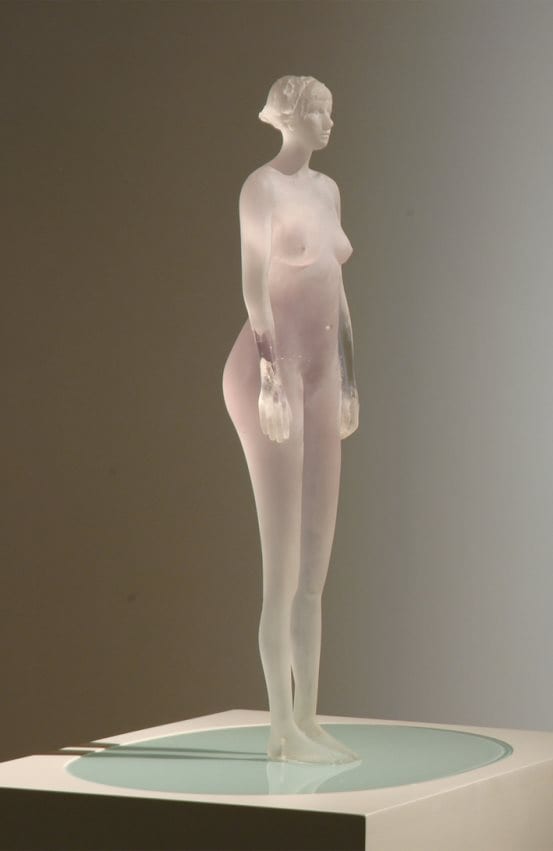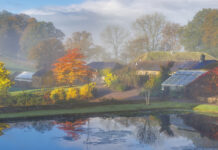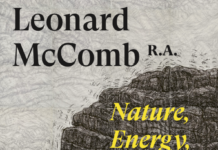BUILDING AN AFRICAN ART ECONOMY THROUGH CO-CURATED AFRO-FRENCH COLLABORATION
Tuesday 15 June 2021
Venue: 7 Rond-Point des Champs-Élysées, 75008, Paris, France
The first Aspire & Artcurial collaborative sale is part of an ongoing endeavour to showcase Modern and Contemporary African art on a global scale which will contribute to a long overdue “payback” for African artists, say the two auction houses preparing for their June 15th sale in Paris.
“By moving increasingly towards a form of collaborative economy, and by joining forces co-operatively we mutually benefit by increasing our global reach, broadening the offering that we can present to the market, and fundamentally, promoting the exceptional quality of the art that emanates from this continent to an international pool of collectors.
To build an African art economy we need to create a global market for African art and the long-term ramifications that will have for Africans who work within the broader cultural industries. It’s about closing the representation gap. It’s about aligning value – commercial and cultural. It’s about re-positioning art from this continent within the scope of the global canon. We believe it’s a social responsibility that will have a very real, tangible impact for artists on the African continent and diaspora,” says Ruarc Peffers, MD of Aspire.
Ruarc Peffers, MD of Aspire, is not shy of controversy and he adds: “So much of the wealth of Europe was built off the bodies, efforts and minerals that emanated from Africa, without Africans having received much direct benefit. In many ways this trend has not changed. At Aspire, we aim to present the cultural produce of Africa to a global market, but ultimately return the proceeds to Africa, thereby creating value and building wealth throughout the continent. By growing value in art from this continent we are systematically closing the historical value gap and addressing social and economic development head-on, while adding value to collectors of African art around the world, and simultaneously adding value to Africans in Africa.”
Buying contemporary African art for long-term investment makes sense given its performance over the past two decades. Steady growth with astonishing peaks has been the hallmark of the art market over the last few years, creating the perception of a safe hedge against inflation. But can it still be viewed as such? What do international and local auction results indicate about the strength of the market? Total auction sales for the period June to August 2020, according to MutualArt, have shown, not unexpectedly, a decrease in activity with areas most affected being the UK (63%) and USA/Canada (50%) while the rest of the world and Europe has only seen a 23% and 21% contraction, respectively, according to MutualArt.
While there is some speculation of the art market boom fizzling out, there is no doubt that African and South African art sales are booming. Although the African art market represents only a small percentage of global art sales, the South African art market accounts for most of this, and the rate of growth of this market in recent years has outperformed the larger international capitals.
With ever-growing interest in modern and contemporary African art, the international art market has witnessed an exponential increase in prices achieved for African artists, delivering unprecedented results at auction and steadily increasing prices for selected artists.
In the Contemporary Art Market Confidence Report, published in May 2020 by ArtTactic, William Kentridge jumped from number 25 in 2009 to number 6 in 2020 in the long-term Confidence Indicator ranking. It is noteworthy that Kentridge’s Drawing from Stereoscope (Soho in 2 Rooms) sold for R6,600,400—a world record for the highest price ever paid at auction for a drawing by the artist —at Aspire’s auction in 2018, proving that it pays to sell with the best. So Kentridge’s tapestry Argument from Authority (Charon at the Event Horizon), 2013, and the associated ink and wash painting and collage from which the tapestry was derived coming up at €135,000–160,000 on Aspire’s next auction in collaboration with Artcurial, is one to watch.
While these results stimulate confidence in the local art market, an ever-widening array of art on offer can confuse potential art buyers. Who are the top African artists? Which works fetch the top prices? Where to begin collecting? How to develop a collection to ensure sustained value and growth?
There’s no doubt that African art is hot property. Yinka Shonibare CBE, El Anatsui, Abdoulaye Konaté, Julie Mehretu and Moshekwa Langa are amongst the most sought-after contemporary artists. Look out for works by Godwin Champs Namuyimba, Peter Ngugi, Misheck Masamvu, Turiya Magadlela and Jean David Nkot, who are in increasing demand.
While investing in art is growing in popularity, art should always be bought as a long-term investment. Flipping art—the term for rapid re-selling—is not a good practice and undermines the art market. It’s important to buy with an eye on the future and to obtain the best advice before buying.
Savvy collectors can still buy art with great growth potential. As with any investment, the answer lies in doing your research, seeking advice from trusted sources and buying the best you can afford. Specialists at auction houses such as Aspire Art Auctions, with years of experience in the art industry, can offer invaluable insights into the art market, illustrating what top works have fetched locally and internationally at auction, where the results are made public.
Aspire strongly believes in the quality, creativity and historical and cultural significance of the art produced on the African continent from antiquity to the present day. As the Cradle of Humankind, the inventiveness and imagination of the human race emanates from South Africa, the home of Aspire Art Auctions.
There is immense room for growth in value of African modern and contemporary art as it aligns more and more to the value systems and pricing levels of the rest of the world, and Aspire-Artcurial present opportunities to savvy collectors to get involved and engage with a market that is primed to scale exponentially over the coming decades
This second Aspire-Artcurial Collaborative Sales offers some wonderful work:
A magnificent tapestry by William Kentridge, extraordinary in scale and innovation, and employing a weaving technique developed in France, leads the field. Kentridge’s print, The Battle Between Yes and No and Georgina Gratrix’s painting, Most Beautiful Girl, offer amusing and incisive commentary on notions of beauty and ‘the battle of the sexes’. In contrast, Zimbabwean, Misheck Masamvu’s painting Natural Selection muses on Darwinian notions of human adaptation while South African Athi-Patra Ruga raises questions around ethnicity and sexual orientation in a glorious textile construction that featured in the exhibition Art Afrique at Fondation Louis Vuitton in Paris in 2017.
William Kentridge, Argument from Authority (Charon at the event Horizon), 2013, tapestry and drawing | Estimates: ZAR2 300 000 – 2 800 000 (€135 000 – 160 000)
Georgina Gratrix, Most Beautiful Girl, 2010 | Estimate: ZAR420 000 – 600 000 (€25 000 – 35 000)
Misheck Masamvu, Natural Selection, 2017 | Estimat: ZAR 315 000 – 420 000 (€18 000 – 24 000)
Athi-Patra Ruga, Uzukile the Elder, 2013 | Estimate ZAR 360 000 – 460 000 (€ 20 000 – 26 000)
Rarely seen at auction is an exquisite platinum palladium print by David Golblatt from his On the Mines series of 1969 and the last in the edition of Looking up the core, Ponte City, Johannesburg, 2008 from the series which won Mikhael Subotzky and Patrick Waterhouse the Deutsche Börse Photography Prize in 2015. A strong line-up of photographers includes Zanele Muholi, Nandipha Mntambo, Mohau Modisakeng, Rotimi Fani-Kayode and Billy Monk’s photographs from the Catacombs nightclub.
David Goldblatt, The last of the bigger rocks… 1969 | Estimate: ZAR 420 000 – 600 000 (€25 000 – 35 000)
Mikhael Subotzky & Patrick Waterhouse, Looking up the core, Ponte City, Johannesburg, 2008 | Estimates: ZAR200 000 – 240 000 (€12 000 – 14 000)
Look out for classic mid-century modern sculpture by Sydney Kumalo and Lucas Sithole and extraordinary contemporary works from Doreen Southwood and Patrick Bongoy. Dumile Feni’s magnificent large-scale drawing captures the power of King Sobhuza of Swaziland, the longest reigning monarch ever. Also included are works by stalwarts like David Koloane who played a seminal role during the apartheid years and Blessing Ngobeni, the Standard Bank Young Artist award winner and initiator of the Blessing Ngobeni Art Prize to advance young artists.
Doreen Southwood, Untitled, 2004 | Estimates ZAR 80 000 – 120 000 (€5 000 – 6 000)
Dumile Feni, King Sobhuza of Swaziland | Estimates: ZAR780 000 – 1 100 000 (€45 000 – 65 000)

|
| Help keep news FREE for our readersSupporting your local community newspaper/online news outlet is crucial now more than ever. If you believe in independent journalism,then consider making a valuable contribution by making a one-time or monthly donation. We operate in rural areas where providing unbiased news can be challenging. |
























